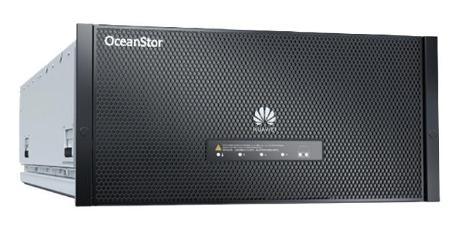Flexible Exabyte-Class Scale-Out Storage: Huawei OceanStor Pacific
The Huawei OceanStor Pacific can now provide almost 7 exabytes of storage. An impressive figure, but by no means the only standout feature of the third generation of Huawei Scale-out Storage. Flexibility and efficiency were the main focus of development.
What is scale-out storage?
In the trade press, scale-out storage is normally used to describe NAS storage that’s easy to upgrade. If capacity in the existing storage systems is no longer sufficient, new nodes can simply be added. From the client side, only the relevant file system or the storage pool is upgraded. However, this description isn’t quite as accurate when it comes to OceanStor Pacific, since it offers typical NAS protocols such as NFS, SMB, S3 and HDFS, as well as implementing POSIX, SCSI and iSCSI. At least the last two interfaces are uniquely block-oriented. This extensive list provides the basis for potential applications.
2. Why do you need the Huawei OceanStor Pacific?

The first thing to mention is deployment in a typical enterprise environment. The various data, which is currently distributed across many systems, can be consolidated. Multiprotocol interoperability can prevent data copying. For instance, a file that is written via the S3 object interface can still be used directly via NFS, SMB or HDFS without any additional copying. This makes it far easier to evaluate available data in an enterprise with big data and AI, and reduces the TTM for new applications.
Client separation allows mapping of the most complex access scenarios. Typical access time of a millisecond even supports connection as virtualization storage. This is also another highlight of the Pacific series, as the system is optimized not just for large files—a typical feature of Scale-out storage—but can also optimally process workloads in the small-random range.
And while we’re talking about speed, this takes us nicely to the next deployment scenario — high-performance computing (HPC). Today, HPC is not just for universities and other scientific institutions — it’s also used extensively in industry. Just think about the search for raw materials, automobile manufacturing, the aerospace industry, and drugs development, to name a few. Aside from top IO values (IOPS), key requirements are high bandwidth and good metadata performance. From a hardware perspective, we support this with RDMA-capable 100 GB Ethernet and InfiniBand. The POSIX driver, dubbed Dynamic Parallel Client (DPC), also enables individual compute nodes to request the performance of the entire storage cluster.
Various hardware and software functions support the use of OceanStor Pacific as backup and archive storage. Data can be moved on a policy basis between the high-performance SSD layer and the economical HDD layer. This is even mapped via two new node types.

Fig 1. Huawei OceanStor Pacific 9950
The high-density and high-performance OceanStor Pacific 9950 node houses 8 storage nodes and 80 NVMe SSDs on 5 height units (U). It also delivers industry-beating bandwidth of 32 GB/U and a speed of 400K IOPS/U. And that’s in each height unit!

Fig. 2 Huawei OceanStor Pacific 9550
The high-density and large-capacity OceanStor Pacific 9550 node houses 2 storage controllers and 120 HDDs, with an industry-beating 24 disks per height unit and currently almost 1.7 PB raw capacity for this node. To ensure that plenty of the hardware can be used, our Erasure Code (EC) algorithm delivers disk utilization of 91.6%. For comparison, the same figure is 67% with Hadoop EC and just 33% with Ceph.
Aside from the hardware, the operating system supports important backup and archive functions. These include the aforementioned S3 protocol as well as other storage management functions such as snapshots, replication, encryption, and archive storage.
However, scale-out storage is not just a compelling solution for enterprise and HPC, it is also ideal for SMEs. After all, this storage can be scaled effectively from 6 nodes to up to 4096 nodes. The whole process takes place without interruption and applies to both directions, i.e. adding and removing nodes, as required. All of which paves the way for cloud storage applications. The simple management and good pricing that Huawei is known for are not just compelling for these two applications.
3. Highlights
- Scaling
- 6–4096 storage nodes
- Gigabyte – exabyte
- Performance
- 400K IOPS per height unit
- 32 GB bandwidth per height unit
- Up to 1.7 PB in five height units
- 91.6% disk utilization
- Protocol support
- NFS, SMB, S3, HDFS
- POSIX
- SCSI and iSCSI
- Application areas
- Enterprise
- SME
- High-performance computing
- Cloud storage
- Backup and archive storage
- Cost
- Simple HTML5-based management
- Minimal space requirements
- Energy-optimized
- Low investment costs
Read more about the OceanStor Pacific series of solutions. Until next time!
Disclaimer: Any views and/or opinions expressed in this post by individual authors or contributors are their personal views and/or opinions and do not necessarily reflect the views and/or opinions of Huawei Technologies.
Leave a Comment